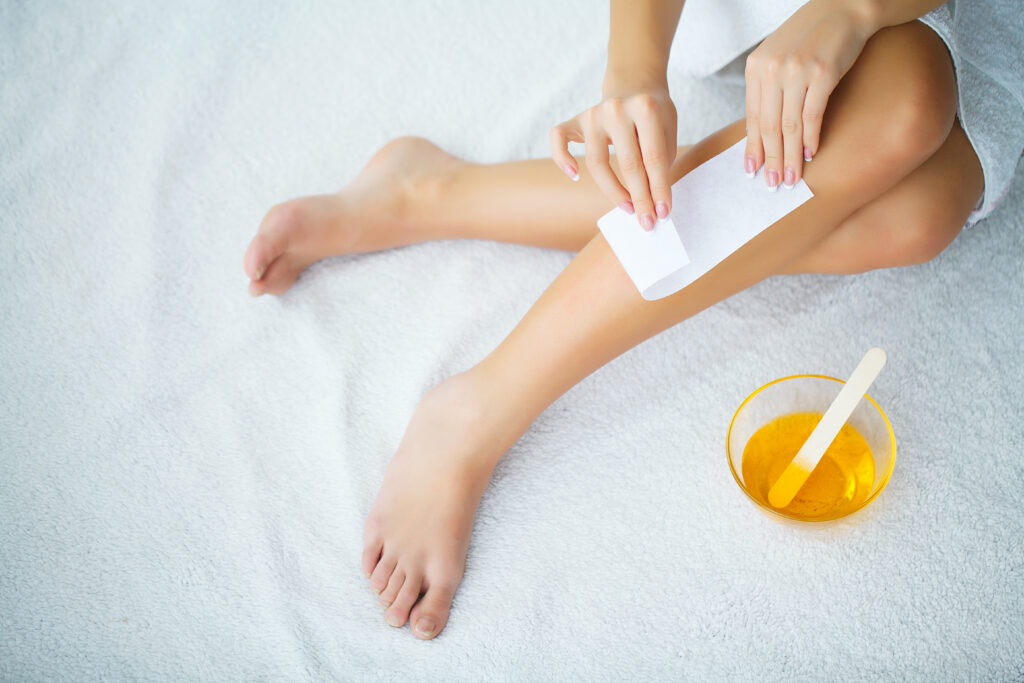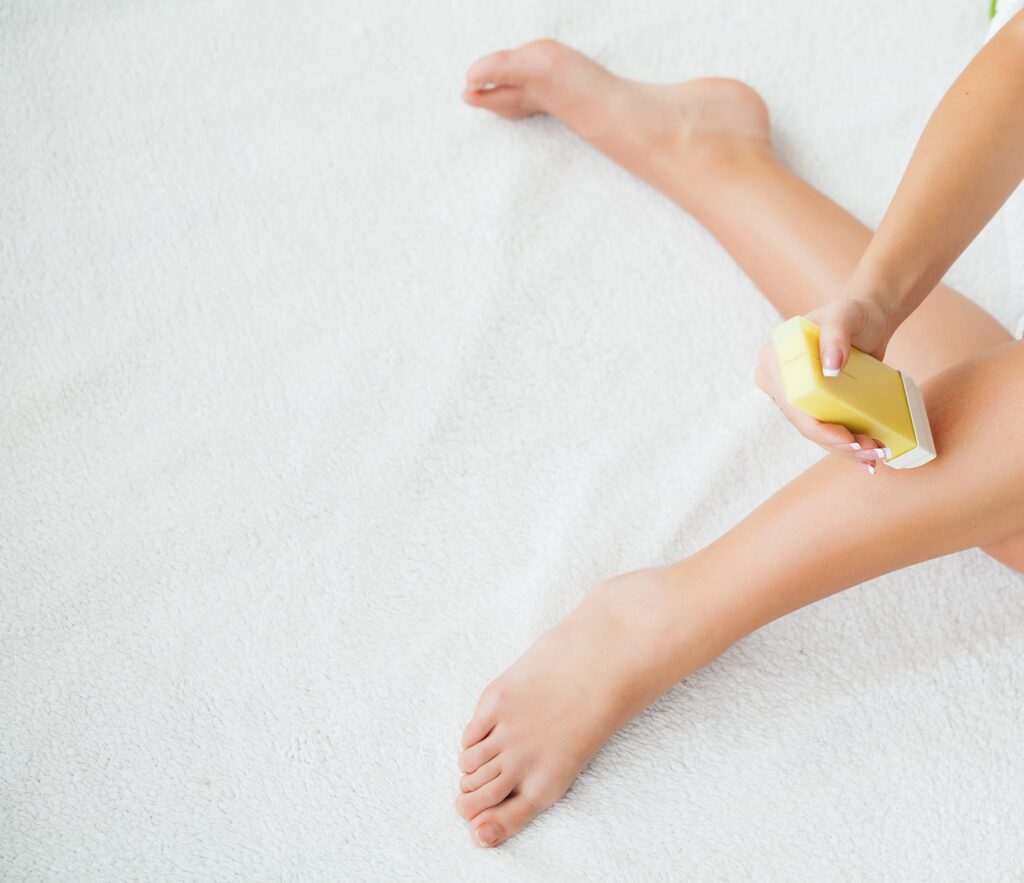
Soft wax is the secret behind many DIY hair removal enthusiasts who want to achieve a salon-like look at home.
This flexible wax has a captivating charm as it adheres more to the hair than the skin, making the removal process less painful and gentler on the skin. it is also versatile and can be used on various body parts, such as legs, arms and underarms. Moreover, soft wax is simple and easy to use, as it does not req0000uire much equipment or expertise, making it ideal for beginners. However, to get the best results with waxing at home, one needs to master the art of applying and removing wax strips. By doing so, one can enjoy the smoothness and allure of soft wax, which brings the professional touch into their personal space.
Benefits of Soft Wax
- Easy and convenient solution for at-home hair removal without the need for professional assistance.
- Provides a versatile option for various hair removal needs and large areas of the body.
- Gentle adherence to hair, minimizing discomfort during the removal process.
- Accessible for at-home users without specialized training as pre-made strips or kits.
- Budget-friendly alternative to salon treatments, offering affordability and smooth results.
- Requires minimal equipment, making it beginner-friendly.
- Removes hair from the root, providing longer-lasting results compared to shaving and contributing to smoother skin.
- Empowers you to take charge of your grooming routine, promoting a sense of independence and self-care.


How To Apply Soft Wax
- Get your skin ready, by trimming any long hair gently exfoliating, cleansing and moisturizing.
- Warm up the wax either in a wax warmer or microwave until it reaches a warm temperature. Prior to application do a patch test on your wrist to ensure it’s not too hot for your skin.
- Using a spatula or wooden stick apply a layer of wax onto your skin following the direction of hair growth.
- Place a cloth strip over the applied wax, press down firmly and wait for 2 to 3 seconds before removing the cloth in the direction of hair growth while keeping your skin taut.
- Repeat these steps until you have finished waxing the desired area. Avoid going over the spot than once to prevent potential irritation and damage to your skin.
- Once you’re done with waxing soothe your skin by applying packs and moisturizer. It’s important to avoid exposing your waxed skin to sunlight hot showers and tight fitting clothing for, at least 24 hours.
Improve Your Soft Waxing
To make your soft waxing experience more enjoyable and effective, here are some tips and tricks that you can follow:
- Before waxing, trim your hair to about 1/4 inch long. This will make the waxing process easier and less painful, as longer hair can get tangled and pull on the skin.
- Make sure the wax is warm but not too hot before applying it to your skin. If the wax is too hot, it can burn your skin or cause blisters. If the wax is too cold, it can be hard to spread or remove. You can test the wax temperature on your wrist before using it on other areas.
- After waxing, apply cold packs and a moisturizer to your skin to reduce inflammation and irritation. Avoid sun exposure, hot showers, and tight clothing for at least 24 hours, as these can aggravate your skin or cause ingrown hairs. You can also use aloe vera gel, witch hazel or tea tree oil to soothe and heal your skin.


Post-Waxing Skin Care Tips
Soft wax can cause some skin irritation and ingrown hairs if you don’t take proper care of your skin after the procedure. To avoid these problems, follow these simple steps:
- Apply a cool compress or aloe vera gel to soothe the waxed area and reduce inflammation. You can do this for up to 20 minutes at a time.
- Avoid tight-fitting clothes, hot showers, sun exposure, and sweating for at least 24 hours after waxing, as these can aggravate your skin and cause more irritation.
- Exfoliate the waxed area gently with a mild scrub or a washcloth every two to three days to remove dead skin cells and prevent clogged pores and ingrown hairs.
- Moisturize the waxed area daily with a fragrance-free cream to keep your skin hydrated and smooth.
- If you notice any bumps, redness or infection, apply an over-the-counter antibacterial cream or an ingrown hair serum to the affected area. Avoid picking or popping the bumps, as this can worsen the condition and lead to scarring.
FAQ
What is soft wax, and how does it differ from hard wax?
Soft wax is a popular hair removal method that comes in a semi-liquid form and is applied thinly on the skin. Unlike hard wax, it adheres to both the hair and the skin, making it suitable for larger areas. “Learn More“
How do I choose the right soft wax for my skin type?
Consider your skin’s sensitivity and specific needs. Look for soft waxes formulated for sensitive skin and those containing added moisturizing ingredients for a gentler experience.
Can I use soft wax at home without professional training?
Yes, it is designed to be user-friendly, making it accessible for home use. Most soft wax kits come with detailed instructions, making it suitable for beginners.
Can soft wax be used on sensitive skin?
Soft wax can be suitable for sensitive skin. Opt for formulations explicitly designed for sensitive skin and conduct a patch test before full application to minimize potential reactions.
What are the essential aftercare steps for soft waxing?
you should avoid hot baths and sun exposure immediately. Apply an alcohol-free moisturizer for soothing hydration, choosing fragrance-free options to minimize irritation. Moreover, wait 24 hours before sun exposure. If discomfort persists, use aloe vera or a cold compress. Start exfoliating after 48 hours to prevent ingrown hairs. Additionally, avoid vigorous activities and tight clothing to prevent irritation. Regularly exfoliate to maintain smooth skin. If signs of infection persist, consult a healthcare professional promptly.
Can I use soft wax during pregnancy?
While it is generally safe, it’s advisable to consult with a healthcare professional before using it during pregnancy due to potential changes in skin sensitivity caused by hormonal shifts.

